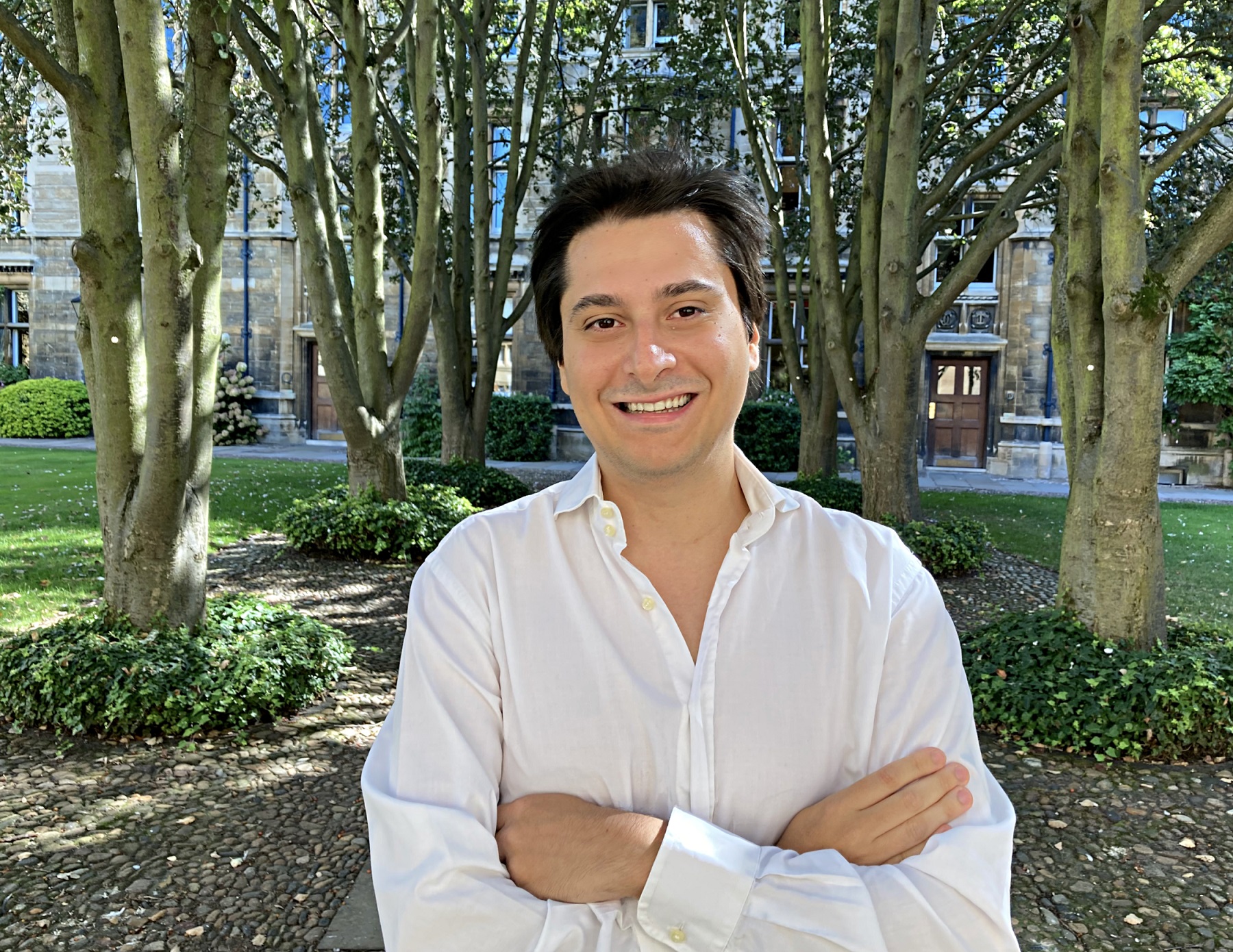Demetrios Lefas (Engineering PhD 2016) is joining Gonville & Caius College as a Fellow in Michaelmas Term, having received a Royal Academy of Engineering (RAEng) Research Fellowship to investigate how he can enable the design of future engine architectures by pushing the limits of jet engine design whilst preventing aeroelastic instability.
Demetrios has enjoyed a fast rise since completing his PhD at Caius under the supervision of Professor Rob Miller, a Caius Fellow. After finishing his PhD, Demetrios received a 12-month EPSRC Fellowship based on the immediate implications of his research and its direct impact on engine manufacturers such as Rolls-Royce. During this time, he translated his methods into Rolls-Royce’s design system and used these to design some key blade rows within their engine, showing significant efficiency improvements. Over the past year, he has continued his work as a Rolls-Royce Research Fellow up until being awarded this RAEng Fellowship.
The RAEng Fellowship is one of 10 handed out to outstanding early career researchers at UK universities, designed to advance excellence in engineering by providing funding for five years to allow awardees the freedom to concentrate on fundamental research in any field of engineering.
Demetrios’ research lies at the interface between aerodynamics and mechanical vibrations, tackling practical problems relating to aeroelastic instabilities found in jet engines. He aims to unite the world-leading work of the Whittle Laboratory (Aerodynamics Centre), where Professor Miller is the Director, and Imperial College London (Vibrations Centre), where Demetrios is a visiting researcher.
Resolving the catastrophic issue of aeroelastic instabilities, such as fan blade flutter – where changing aerodynamics amplify a fan blade’s vibration leading to structural failure – is essential in the design and production of next-generation engines.
“It’s very important to keep studying these aeroelastic instabilities so that we can enable the introduction of new jet engines at the timeframe needed for our net-zero carbon transition,” Demetrios says. “No matter the fuel route taken to dramatically cut carbon emissions, aeroelastic problems will hamper future engine development and will need to be solved quickly.”
By leading his own group and collaboratively working at the Whittle Laboratory and Imperial thanks to the RAEng Fellowship, Demetrios believes problem-solving should be more straightforward than the current approach utilised.
“It's key not just to collaborate directly with the industry that brings the practical problem, but to also join forces and collaborate with other academic institutes that are also trying to deal with the same problem but in a very isolated way,” he says.
“Currently what we do is we first design an aerodynamic fan blade shape for efficiency and then we have to check it for aeroelastic instability afterwards, which requires massive aeroelastic computations at great expense.
“And whilst these computations can predict if the blades are going to flutter or not, they are so complex that they mask the underlying physics. This lack of understanding means that the computations cannot provide guidance on how to influence the design to prevent flutter. This process creates this disjointed and time-consuming loop that results in conservative designs.
“This has worked well for conventional jet engines. But with our carbon transition, and the need for more radical changes at a much faster pace, this has now become a real bottleneck in the design of future jet engines. This is why I have moved into this space as the focus of my Royal Academy Fellowship.”


